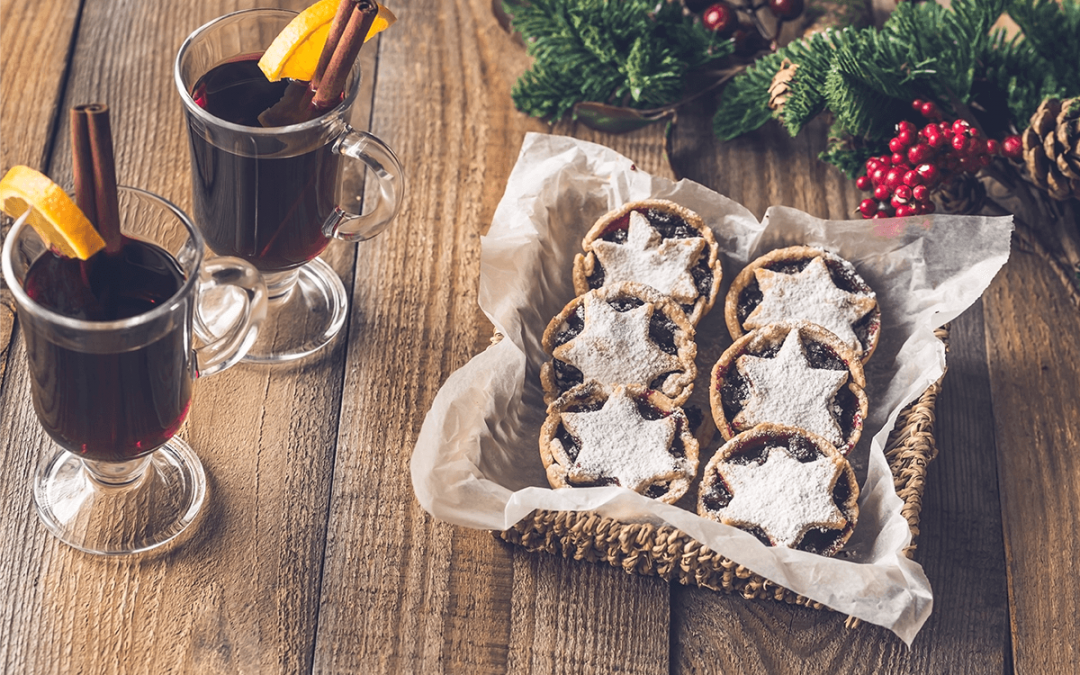Before we get into it, the most important thing to caveat is that it’s not all about calories. Especially at Christmas. For some people, December is a time to relax the usual routines, indulge a little, and enjoy food a lot more.
But for those on a weight-loss journey, Christmas can be a time of concern. It’s so easy to overdo it and feel like the effort put in during the run-up has been lost. It’s no secret that the only way to lose weight is through a calorie deficit. That means, keeping some control over calories around Christmas time is important for a lot of people.
So, without judgement or expectation, here are some tips to help you keep within your calories this Christmas. Take them. Or leave them. It’s totally up to you.
Think about your festive tipple
If Bailey’s is your go-to around Christmas, then, by all means, make room for it. But if you’re less picky about exactly what you drink in the evenings, you can save yourself some serious calories by making different choices.
The variation in calorie content between alcohol drinks is huge. Both the percentage of alcohol and the sugar content of a drink contribute towards its total calorie count. Another important factor is of course the amount you have.
Some of the highest calorie culprits by serving include Baileys (approx. 164 calories for 50ml), mulled wine (approx. 177 calories for 1 large glass), and cider (approx. 239 calories for 1 bottle).
On the other end of the spectrum, you’ve got champagne (approx. 86 calories for 1 standard glass) and prosecco (approx. 89 calories for 1 standard glass). Plus, most spirits when topped with zero-calorie mixers. For example, a gin and diet tonic (approx. 60 calories for a single), a whiskey and diet coke (approx. 65 calories for a single), or a vodka and diet lemonade (approx. 58 calories for a single).
Head out for Christmas walks
The easiest way to balance the in vs. out of your calories over Christmas is by moving more. That doesn’t mean an intense HIIT session on Christmas Eve or a 10km run on Boxing Day. Just making time for leisurely Christmas walks is going to have a sizeable impact on the amount of energy you burn during the day.
It’s very easy to stay completely sedentary over the Christmas period. And whilst it’s absolutely okay to relax and unwind, upping your step count is probably the easiest way to balance out your calories during this time.
General movement like standing and walking accounts for the highest percentage of calories under your control that you burn during the day. Much more than purposeful exercise in the gym or at home. There’s a reason lots of people preach about doing 10,000 steps a day. Don’t underestimate the effect it can have on your energy output.
Remember the addition of oil
If you’re one for counting calories precisely, the easiest mistake you can make is forgetting about the addition of oil. Oil carries 119 calories in just one tablespoon. That can quickly add up as you use a generous amount of it in Christmas cooking.
However, it makes everything taste delicious. So, we’re definitely not recommending you remove it from your cooking. If you’re in charge of roasting the vegetables, just be mindful of how much you’re using. And if you’re only in charge of eating them, just remember that added ingredient if you’re planning to count your calories.
Make room for the veggies
Vegetables are nutritious. But they can also be delicious. Away from the big day itself, when you’re planning meals for the festive period, opting for dishes with lots of vegetables included will have a natural reduction in the number of calories it contains.
Vegetables are low density when it comes to calories. That means you can eat a high volume of them, without racking up a huge number of calories. On the other end of the spectrum, high-density foods like nuts, creams, chocolates, and pastries have a higher number of calories for a much smaller amount.
When cooking meals or serving yourself food, increasing the amount of veg and slightly decreasing the amounts of other food groups will mean you’ll be just as full for a lower number of calories.
Eat mindfully
When surrounded by so many snacks and treats, it’s easy to feel beyond full without even realizing. The trick is to slow it down.
Let your body catch up with your mind when it comes to cravings and hunger. Your stomach is very good at telling you when it’s hungry and when it’s not, so remember to listen to it. That way, you create a little bit of time before diving in for the next treat, by which point you might feel like you don’t even want it anymore.
By no means deprive yourself of your favourite things. Just save some for tomorrow if you think you might have had enough for the day.
Find some lower-calorie favourites
Whilst most things around Christmas time tend to be high in calories, there are definitely some lower-calorie options you can go for.
Prawn cocktail is a common Christmas starter. Prawns are fairly low in calories, meaning it’s a good option to go for. Especially if you use lighter mayonnaise to make it.
Chocolate covered strawberries are so easy to make and certainly aren’t as heavy as other Christmas snacks.
A traditional trifle isn’t low in calories. But the jelly part is. By increasing the amount of jelly and fruit you use and decreasing the amount of custard and cream (or choosing low-fat versions of it) you can easily lighten this dessert up.
There are lots of recipes out there that can help you cook delicious meals and bake moreish treats without taking an enormous calorie hit. All that’s needed is a little bit of research.
Whether you’re interested in the calories or not, relax, unwind and enjoy all the nice things that Christmas brings.



